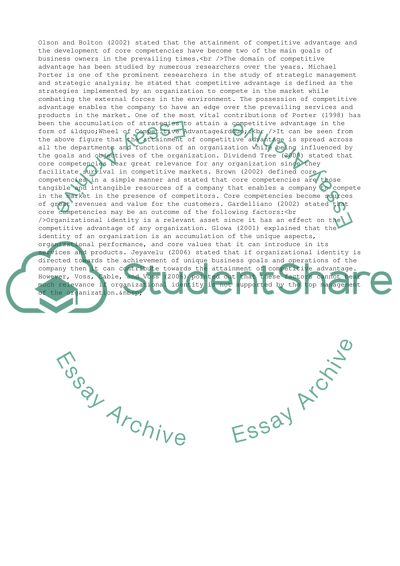Cite this document
(Relevance of Core Competency for the Attainment of Competitive Advantage Essay Example | Topics and Well Written Essays - 1500 words, n.d.)
Relevance of Core Competency for the Attainment of Competitive Advantage Essay Example | Topics and Well Written Essays - 1500 words. https://studentshare.org/management/1759673-the-internal-activities-of-the-organisation-and-establishing-competitive-advantage
Relevance of Core Competency for the Attainment of Competitive Advantage Essay Example | Topics and Well Written Essays - 1500 words. https://studentshare.org/management/1759673-the-internal-activities-of-the-organisation-and-establishing-competitive-advantage
(Relevance of Core Competency for the Attainment of Competitive Advantage Essay Example | Topics and Well Written Essays - 1500 Words)
Relevance of Core Competency for the Attainment of Competitive Advantage Essay Example | Topics and Well Written Essays - 1500 Words. https://studentshare.org/management/1759673-the-internal-activities-of-the-organisation-and-establishing-competitive-advantage.
Relevance of Core Competency for the Attainment of Competitive Advantage Essay Example | Topics and Well Written Essays - 1500 Words. https://studentshare.org/management/1759673-the-internal-activities-of-the-organisation-and-establishing-competitive-advantage.
“Relevance of Core Competency for the Attainment of Competitive Advantage Essay Example | Topics and Well Written Essays - 1500 Words”. https://studentshare.org/management/1759673-the-internal-activities-of-the-organisation-and-establishing-competitive-advantage.


